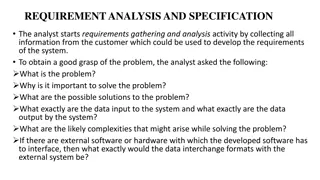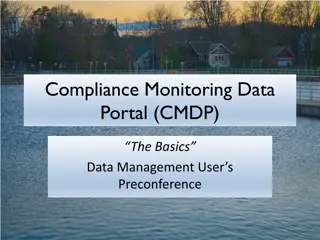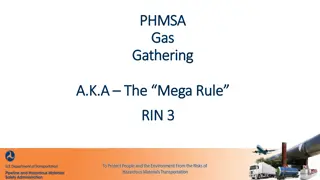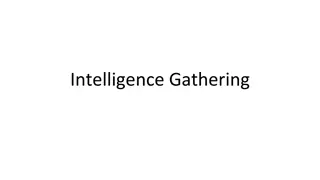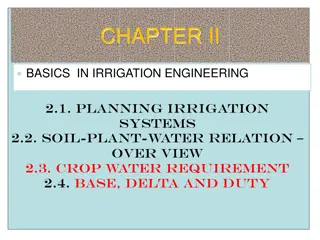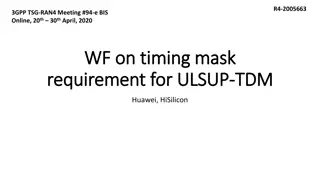
Systems Requirement Development for eN-LIS in Global Health Nigeria
Explore the functional and non-functional requirements for the proposed eN-LIS system in Global Health Nigeria. Discover the essential workflows and functions, including electronic data exchange, dashboards, order management, specimen handling, and more, all aimed at supporting laboratory services based on international standards and best practices.
Download Presentation

Please find below an Image/Link to download the presentation.
The content on the website is provided AS IS for your information and personal use only. It may not be sold, licensed, or shared on other websites without obtaining consent from the author. If you encounter any issues during the download, it is possible that the publisher has removed the file from their server.
You are allowed to download the files provided on this website for personal or commercial use, subject to the condition that they are used lawfully. All files are the property of their respective owners.
The content on the website is provided AS IS for your information and personal use only. It may not be sold, licensed, or shared on other websites without obtaining consent from the author.
E N D
Presentation Transcript
Georgetown Global Health Nigeria: eN-LIS Preliminary Requirement 25 March 2022
Systems Requirement development- Functional requirement Functional requirements are those workflows and functions that the LIS system must be able to perform in order to support the services of the laboratory, based on international standards and best practices. The basic functions fall within several areas of the laboratory workflow: 1. Electronic exchange of data (interoperability middleware) 2. Dashboards (Malaria, TB , HIV etc) 3. Order management 4. Specimen management 5. Test and Result management 6. Reporting 7. Quality management. 8. System management/administration and Data security 9. Internal laboratory commodity, wastage and equipment management 10. Task management and workforce management
Systems Requirement development: Non - Functional requirement In addition to these functional requirements, additional non-functional requirements are also necessary for a comprehensive LIS evaluation, and include: System UI/UX Allow concurrency (No locking) Offline and online mode Open system (can be used for any machine, reagent etc.) Open-Source Governance and Community engagement (community of practice) Configurable
Electronic Exchange of Data (Interoperability) Laboratory Analyzers: The system should be able to interface electronically with laboratory analyzers to automatically import test results. This process should include a user verification step of those results. External Systems: System should be able to use a standards based protocol to transfer patient demographic, test order, and test results data between the following types of electronic systems: Patient electronic medical record or monitoring systems ( NDR, NigeriaMRS, LAMIS, eTB manager, SORMAS etc) Master patient index Stock management systems Aggregate reporting systems (DHIS2) Other laboratory information systems The system may have an electronic user interface to allow clinicians and/or patients to access securely test results online. The system also may have an alerting system for clinicians and/or patients notifying them that their results are ready, or other important notifications.
Order Management- Order and Specimen Registration Order Information: The system must allow the submission and maintenance of requests linked to an individual, including the assignment of tests and processes to be performed and the associated data. The system should assign a single order number to the overarching request linked to a patient and allow multiple samples/specimens and tests to be ordered under that number. The system should allow the printing of barcode labels for the paper forms. The system must provide required fields for: Order location (for returning results) Requestor Name Date and Time Requested
Order Management- Order and Specimen Registration Patient Demographics: System must link orders and specimens to individuals and store the appropriate associated patient information. The system should allow registering a sample with or without detailed patient demographic information, depending on patient confidentiality and national reporting requirements. Patient information must include: Patient Name and ID Number Name of patient and a single patient ID. The system should allow for multiple pre-defined patient identifiers (national identifier, facility identifier, medical registration number, register number, etc.) Patient Sex Sex of the patient Patient s Date of Birth (Age) Patient s birth date should also show calculation of age. While the use of birthdates is becoming more prevalent, birthdates are often not known. If a birth date is supplied the age should be calculated. A mechanism for retroactively determining the age of the patient at specimen collection time must be provided. Patient address, if known
Order Management- Order and Specimen Registration Accessioning of a unique specimen identifier (laboratory accession number) with a printable bar coded label to each sample must be included
Order Management- Order and Specimen Registration Specimen Information:The system must provide all specimen information necessary for processing tests in a quality manner. The system should allow for aliquoting of samples, and the individual tracking of those aliquots. The system should provide functions for printing barcode labels for specimens/samples for tracking throughout the workflow. Specimen / Sample information included must have: Specimen Identification Number (Laboratory Number) assignment of a unique system generated or pre- generated accession number for each sample. External Lab Number/Location If the sample is received from another location there is the need to track the information supplied by the external source. Date and Time Received Date and time the sample was received by the laboratory Sample Type Type of sample presented for analysis Tests requested and sample association
Order Management- Order and Specimen Registration Specimen Information: Specimen / sample information included should have: Collection Location, Date, and Time Location, Date and Time sample was collected Name of Collector Phlebotomist or person collecting sample Priority of Testing - Routine, Same-day or STAT/Urgent Quality of Sample
Order Management- Order and Specimen Registration Quick and Batch Order Entry: System should support the ability to allow for quick entry (not all patient demographics are entered) so that a specimen ID (laboratory accession number) is assigned, tests are assigned to the specimen, barcode labels printed and testing can begin. Full demographics can be entered at any time before reporting is performed. Billing : The system may perform some limited billing information for laboratory orders. Dispatch and Manifest management Remote sample logging, and approval
Order Management- Patient Search and Longitudinal History The system must allow linkage of orders and tests and results to patients over the lifetime of said patient, if correctly identified. The system must have the ability to search for previous patient information to link current request with previous demographics; when a returning patient is found, system must be able to pre-populate demographic information with the ability to edit and save.
Order Management Sample referral : The system should have the ability to refer individual samples from an order to another laboratory for overflow, confirmatory, or referral testing. The system should be able to maintain the record of this referral and allow for the entering of result data when received from referral laboratory. Order Tracking and Audit: The system must maintain a complete audit trail of order process. Auditing should include: Status of each change that an order undergoes Date and time of event change ID of person who changed the order, and administrator approvals, if applicable The audit trail should be visibly accessible to authorized LIMS users.
Specimen and Test Management- Specimen Tracking The system must be able to perform a sequential processing tracking of specimens by their assigned accession number through the laboratory workflow, including identifying the stage of processing the specimen is currently in. System must provide the ability to track samples in the following scenarios: Within a laboratory, i.e. workstations, refrigerators, incubators, and more Between labs or lab sections and into specimen racks or short and long-term storage containers
Specimen and Test Management- Workplanning Test Workplan: System mustbe able to produce a viewable and/or printable workplan for each test area. This will identify the specimens ordered and ready for testing in this area. The workplans should be sortable by priority, date ranges, or workstation. Retesting: Must have the ability to repeat a test on a specimen and should automatically update the workplan. Prioritization: Workplans should include scheduling based on the prioritization of testing. The workplans may include indicators (such as color coding) of prioritization. In-progress workplans may include real-time updates for newly high-priority/urgent requests for testing Worksheet Creation
Specimen and Test Management- Test and Result Entry The system must support the laboratory workflow for testing after registration and before results are available. Test Assignment: The ability to assign and reassign tests to a specimen, and to change or cancel test requests. The ability to cancel specific tests and reject specimens must be allowed. A reason for a canceled test or rejected specimen should be able to be entered and the reason reported back to the submitter. Reflex Testing: System should provide user-defined reflex testing protocols, test calculations and interpretive reporting.
Specimen and Test Management- Test and Result Entry Results Entry: The system must include the ability for manual and/or automated results entry from both manual and analyzer testing processes. In addition, the results entry functions include: Batch results entry should be available A results interpretation field should be available Reference ranges of tests should be displayed on screen during results entry and validation processes. The system should allow for tracking of QC data with results. The results entry should include additional notes fields for comments regarding the testing, separately for both initial and retesting processes, and may include a separate area for notes to be included on deliverable results reports. The system should allow for backdating results entry for retrospective entry necessary from power outages/downtime. The system may allow printing of label with results for affixing to paper forms.
Specimen and Test Management- Test Validation Results Validation: The system must provide mechanisms for both technical and biological validation of the results. The technical validation should be performed based on the meta data in the test dictionary, such as ranges and criteria for normal results. The biological validation should be a process within the system for a biologist to verify the result in the clinical and laboratory context of the patient. Users must be able to manually accept, reject, and rerun results. Reference ranges of tests should be displayed on screen during results entry and validation processes. The system should provide for a supervisor verification step prior to releasing patient results. Abnormal and Critical Results: The system must provide the ability to automatically or manually flag abnormal and/or critical results. The system must provide a feature to alert users of abnormal results. The system may provide the configuration of requiring a supervisor to clear the alert.
Specimen and Test Management- Test Validation Results Data: Access to results data for either editing or viewing must be based on user roles and privileges. Results should be searchable and verifiable by accession number of specimen/sample, lab order, lab bench, or test type Results must able to be corrected at a later date, even after reporting, and the system should retain the original result, display the previously reported result, while identifying the new result both onscreen and in print as CORRECTED with a date/time of the correction. Results data may be able to be flagged for holding by a supervisor, preventing the reporting of the results until that flag is cleared.
Specimen and Test Management Test Referral: System must be able to allow for specimens to be referred to a secondary laboratory for further testing if initial test results (or testing algorithm) require further confirmation or follow up testing. Test Tracking and Audit: The system must maintain a complete audit trail of the testing process. Auditing should include: Record of each change, including results entry and the results data Date and time of event change ID of person causing event, and administrator approvals, if applicable The audit trail should be visibly accessible to authorized LIMS users.
Reporting Result report Requester Reporting: Once the requested test has been completed and result data entered and validated, a printed report of analysis must be produced for delivery to the clinician and client. Data required to reproduce the report in the future must be stored within the application. Preliminary Results: Should be able to print interim reports that contain preliminary results. Report Frequency: Should have the ability to produce reports as an ongoing, real-time process or printed on-demand in batches.
Reporting Laboratory management and QC report The system should produce workload statistics reports for laboratory management. This should be a summary list for selected time periods (days, hours, etc.), submitters, tests, laboratory sections and instruments. This includes, but is not limited to the following reports: Requests received and specimens registered Tests performed Cancelled tests Pending and rejected test results Non-conformity Turnaround time by department/bench, test, etc. Population Health Reporting: The system should produce reports for positive test results and de- identified aggregate health data for any given time period.
Reporting Information searches All of the LIS data must be searchable, based on the function within the area a user is searching. This possible searches may include, but is not limited to: Patient searches - allowing viewing of the associated attributes and all of the associated orders, specimens, test requests and results, printing and delivery of reports. This viewing may include additional tools, such as trending graphs of results over time, tec. Date ranges - allowing viewing of all laboratory activity, limited by user-defined criteria (such as bench, test, user) by specified dates Test searches - allowing viewing of tests performed and results by user-defined criteria (date range)
Reporting Data security and auditing The system must limit access to both electronic and printing of reports by role. In addition the system must track all access to electronic and printing of reports, including the logging of: Access to reports Printing of reports ID of user access or printing Date/time of access or printing
Quality management-Nonconformity Must allow for flagging of specimen as non-conformity at specimen receipt or at any time during the testing process at either the specimen level or the test level, and must require specification of the reason for non- conformity. The system should provide a selection list for reasons, such as, but not limited to: Improperly identified/labeled specimen Hemolysed specimen Coagulated specimen Insufficient quantity of sample Broken specimen container The system must allow automatic or manual rejection of the specimen based on the reason. All specimens flagged as non-conformant must be easily identified on-screen at any part of the workflow, with the reason available for viewing. The system may provide QC rulesets and alerts for specimens violating QC parameters (overdue for testing, etc)
Quality management Quality Control The system should be able to perform the following: QC parameters management: Be able to be defined and modified within each laboratory and at the level of granularity of test type Sample Linking: Be able to link a sample and quality control measures Reports: Plot and produce QC reports and graphs, such as Levy-Jennings Graphs QC Auditing: Maintain an audit trail of QC events and their associated samples, including the following information: Date and time Sample ID Quality control type and id User who performed the measure QC Alerting: May provide alerts and reminders for QC testing
System management and data security- User management The system must provide the following functions: Authentication: Unique ID and password (with appropriate complexity) for each user Authorization: Role based access to the appropriate components of the system User Maintenance: Authorized users can add, edit, or inactivate user profiles at any time The system should provide: Authentication: Users should be able to retrieve forgotten passwords and/or reset lost passwords on their own
System management and data security Test Catalog management The system must have a user interface/screen(s) for managing the dictionary of tests and procedures carried out by the laboratory, which must have the ability to do the following functions: Add, edit, inactivate any test or procedure Create groupings of tests into panels or categories for group ordering Mapping tests to international terminology coding - LOINC or CPT codes Manage test reference ranges, for both numeric and non-numeric tests, and differentiated by criteria (such as gender, age, etc) Define sensitivity of test results, such as, specification of the number of significant digits by test In addition, the system may allow users to configure the system to do the following: Define tests with extremely confidential results, such that results are limited to not being electronically available remotely To temporarily or permanently disable tests that are not currently available (out of stock, etc) Provide ability to restrict result inquiry access to lab-defined test results based on lab-defined levels of access. (HIV, employee related or legal drug screens
System management and data security Configuration Localization: The system must be able to be localized, including language, date/time format Alert Management: The system should allow user configuration of alerts and notifications to users for specific events and criteria. Lists and Meta Data Management: The system should allow the configuration of the various lists and options for use throughout the system. For example, facility lists, provider lists, specimen workflow state names, and more.
System management and data security System audit tracking All events, data, and access, must be tracked by the system and logged in an auditable log. All auditing must include the user, date, and time. The system must never delete clinical information. Auditing functionality should be maintainable and configurable by an on-site admin Audit logs should be accessible to view and/or print role permitting
System management and data security Data recovery Data must be able to be backed up and encrypted on a configurable schedule, to any defined device, manually by authorized users or automatically. The system must be capable of running on battery power during power instability
Commodity, Waste and Equipment Management The system may perform some aspects of commodity and equipment management. However, neither of these areas are considered essential functions within the reference documents or by the expertise of the team, for an implementation of a laboratory information system. The following criteria are all areas the system may perform, but have not been shown to be best practice within the LIS: Support entering and tracking of consumables, and reagents, including specimen and sample collection kits, test kits, lab supplies, and forms. Provide decision support tools and alerts for consumables, and reagents for stocking, expiration, and procurement Support entering, maintenance tracking, and status of laboratory equipment Provide scheduling reminders, decision support tools, and alerts for equipment maintenance and decommissioning
System management and data security Data recovery Data must be able to be backed up and encrypted on a configurable schedule, to any defined device, manually by authorized users or automatically. The system must be capable of running on battery power during power instability
Documentation and Support The system should have the following documentation available: Installation and Administration guide End User guide and training materials Operations and troubleshooting guide The system may include the following: Storage and retrieval of SOPs, and Job Aids including provide just-in-time access to those SOP s and Job Aids to the users at the point of decision making.
Task Management and Workforce management The System should be able to assign tasks to registered analysts on the system depending on user role and assign privileges. The system should be able to alert analysts when task has been assigned, and able to log the status of the task when completed, pending or reassigned. The system should have the ability to manage the workforce of a labpratory
Categories of users: specimen receptionist/phlebotomist, specimen referrals, medical laboratory scientists on individual laboratory bench or handling specific laboratory equipment, Laboratory/facility managers, public health case finders and case managers, state Laboratory directors, Medical Laboratory Science Council of Nigeria for Auditing and Quality Assurance, Federal Ministry of Health Medical laboratory division, Minister of Health, others are National health planning team at FMoH, Individual program managers in country
References https://www.aphl.org/aboutAPHL/publications/Documents/GH-2019May-LIS-Guidebook-web.pdf





